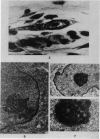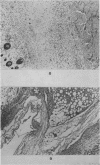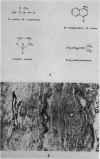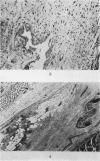Abstract
Four water-soluble carcinogens were injected at the same site subcutaneously into rats, mice or guinea-pigs, twice weekly for 5-8 weeks in order to study the evolution of the early tissue reaction. MNU was injected into rats as 0·1 ml. of 0·5% solution, and into mice as 0·1 ml. of 0·05% solution. NQO was administered to rats (0·1 or 0·2 ml. of 0·25 or 0·1%) mice (0·1 of 0·05%) and guinea-pigs (0·5 of 0·1%). Propane sultone and BEI were administered to rats only, the former as 0·1 ml. of 3% and the latter as 0·5 ml. of 2·0% solution.
The principal features of the tissue reaction produced by each of the four compounds in rats were similar and consisted of destruction of subcutaneous tissue, deposition of fibrin and “fibrinoid”, an abnormal pattern of fibroblastic proliferation with cytomegaly of some fibroblasts and deposition of mucopolysaccharide but little collagen formation. Moreover, the appearance of fibroblastic proliferation was delayed from the normal 2-5 days to 14-16 days.
These features are consistent with the known early effects of carcinogens on proliferating target tissues, and differ considerably from those found in the early reactive lesions to repeated injection of solutions of substances possessing physical properties such as surface activity or hypertonicity, or which precipitate at the injection site.
Full text
PDF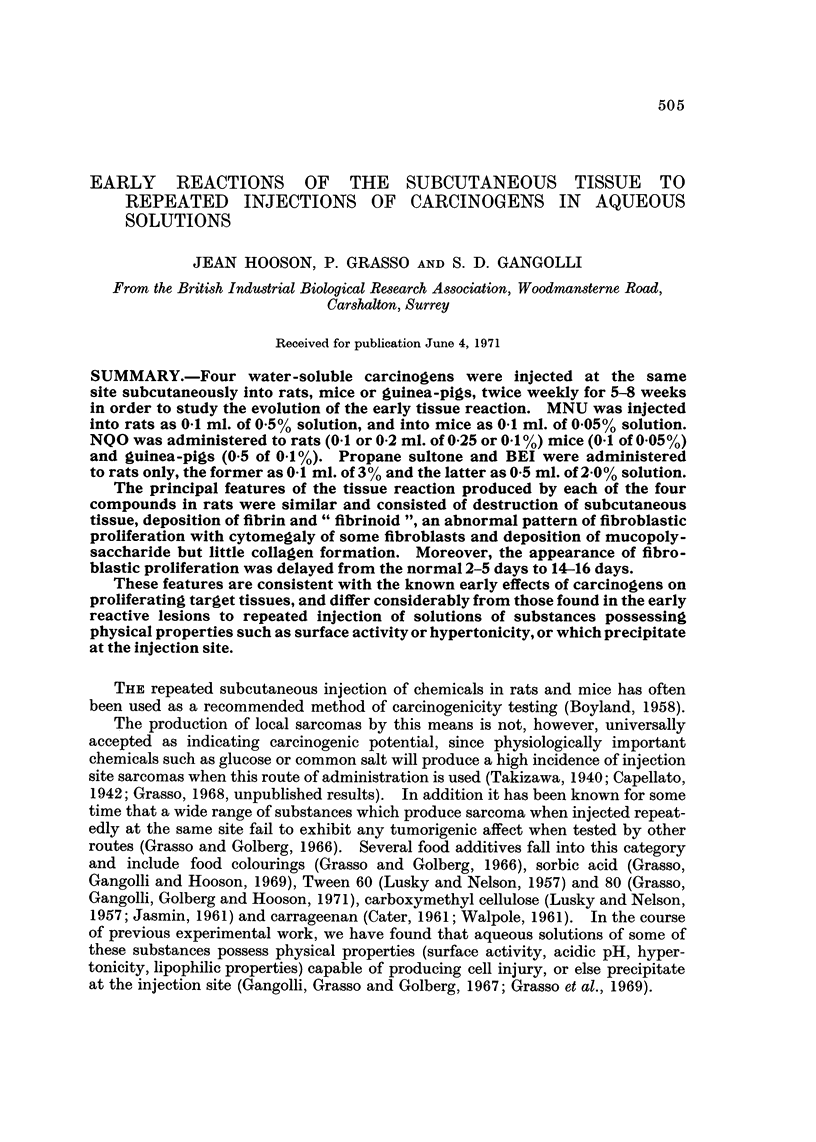
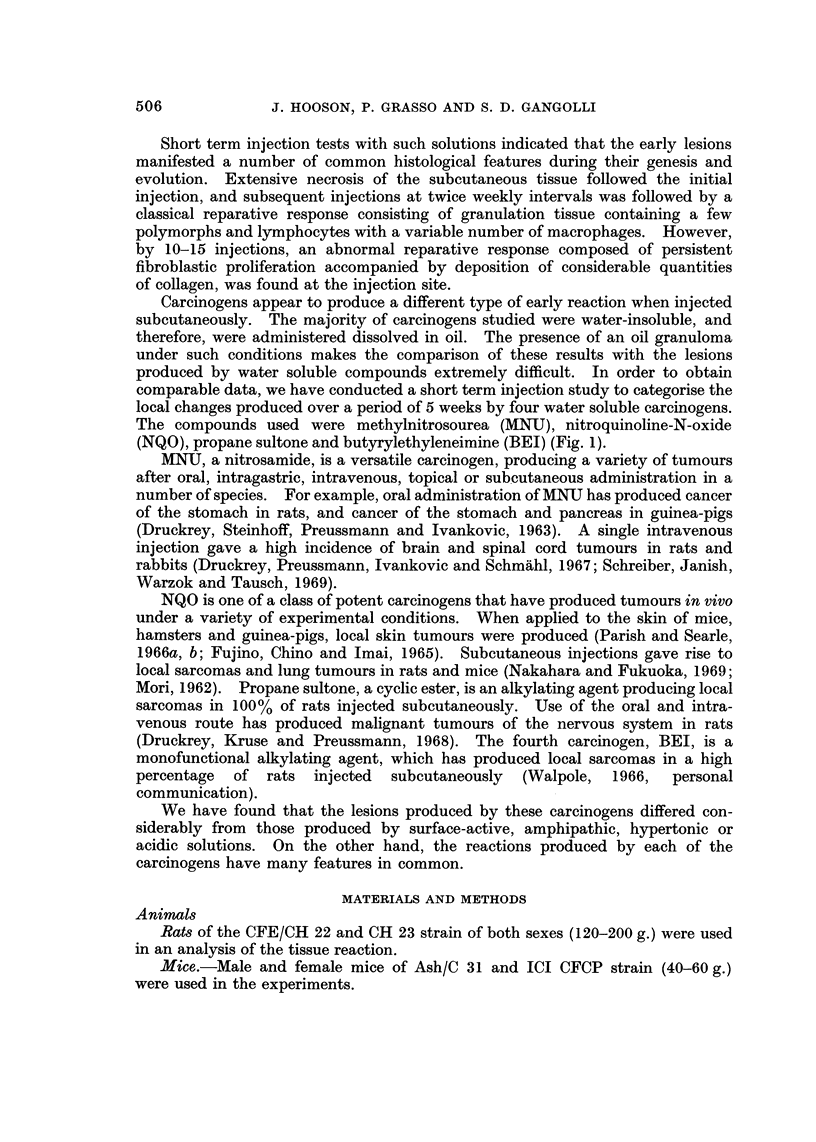
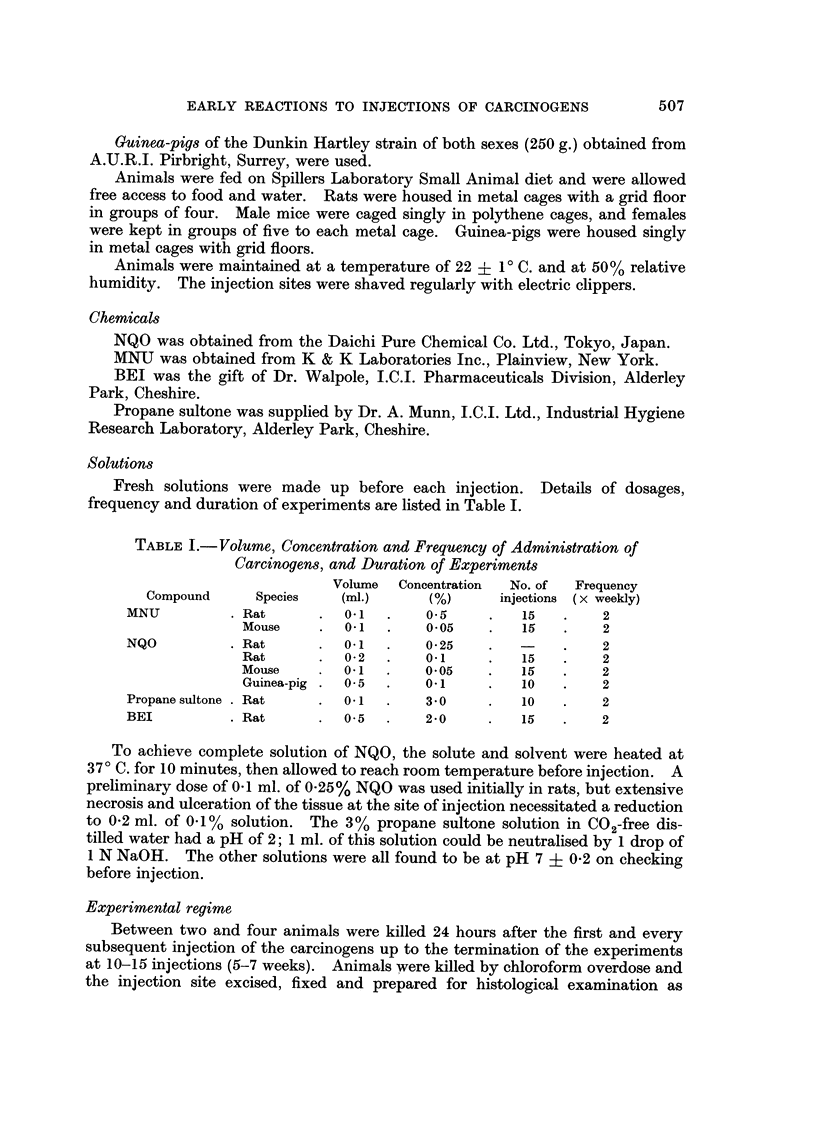
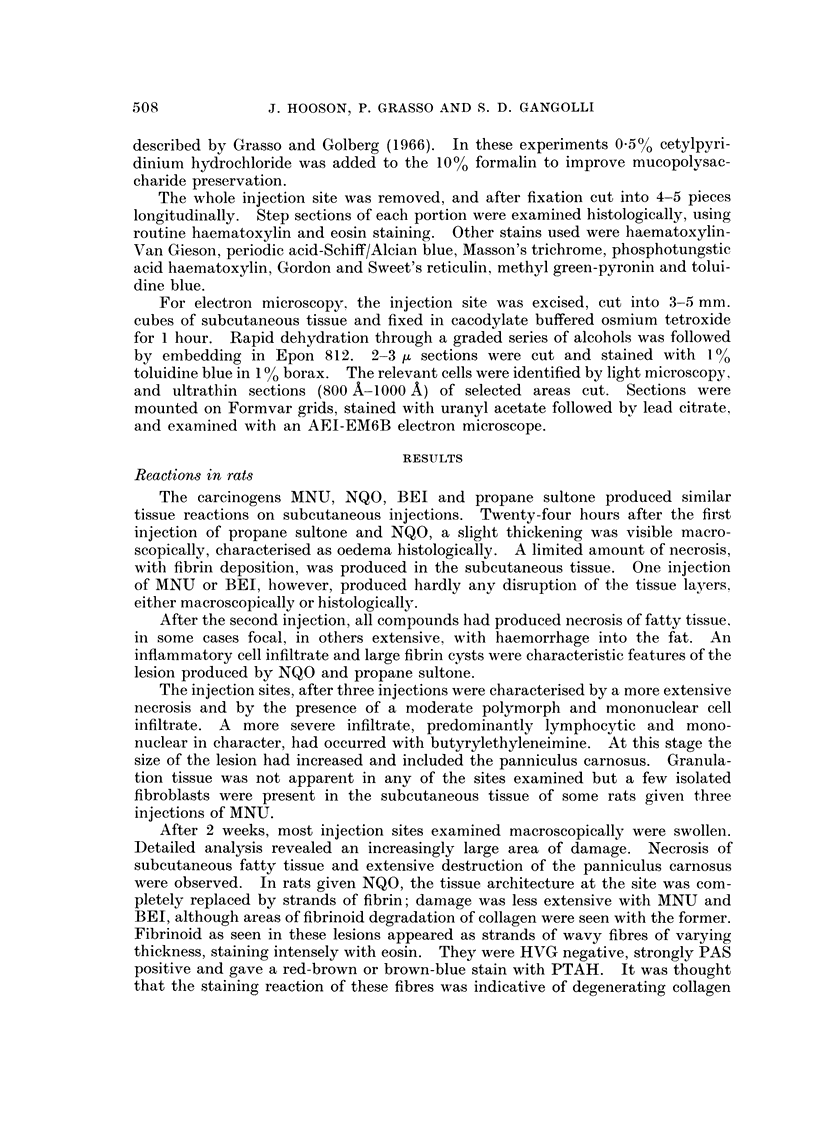
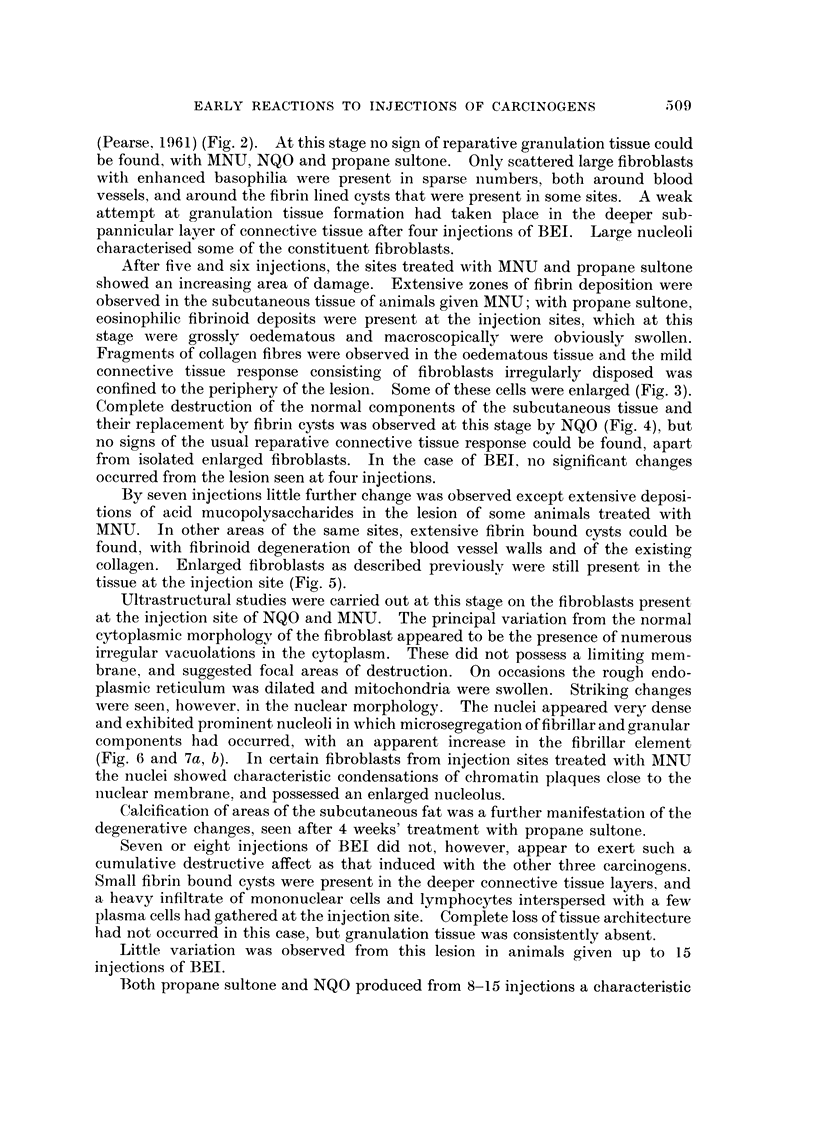
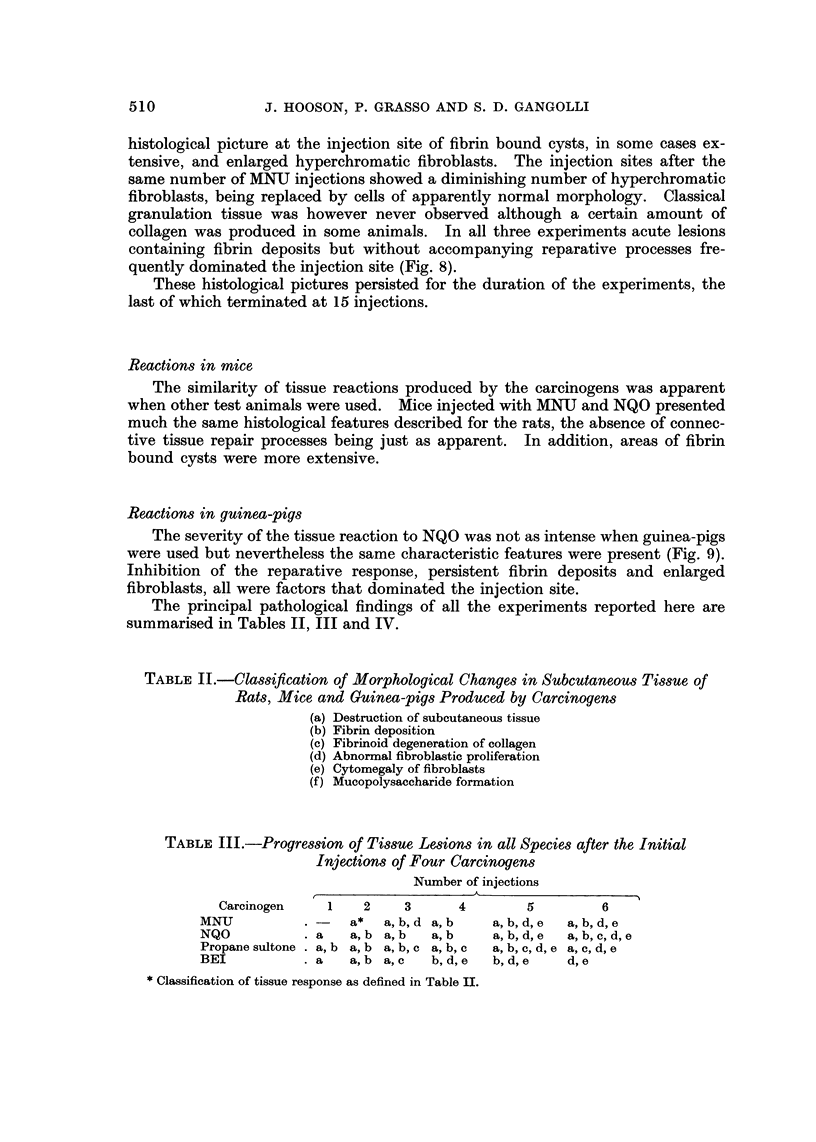
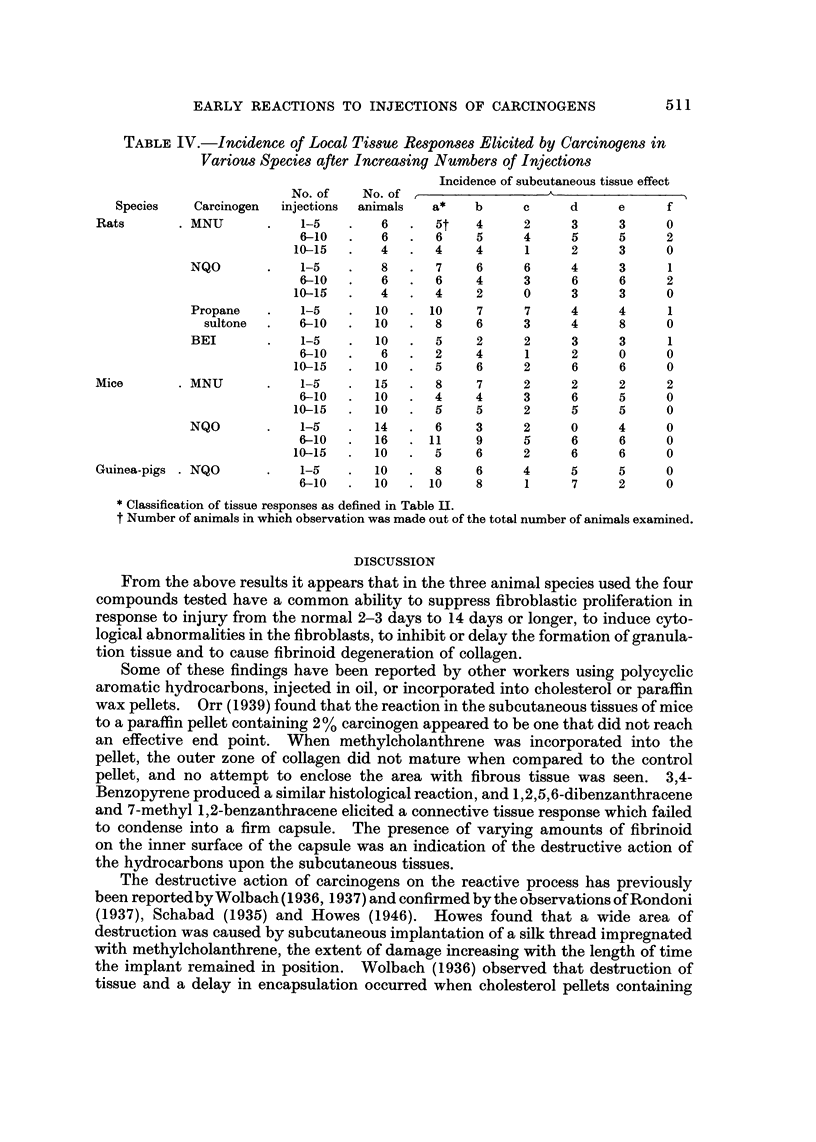
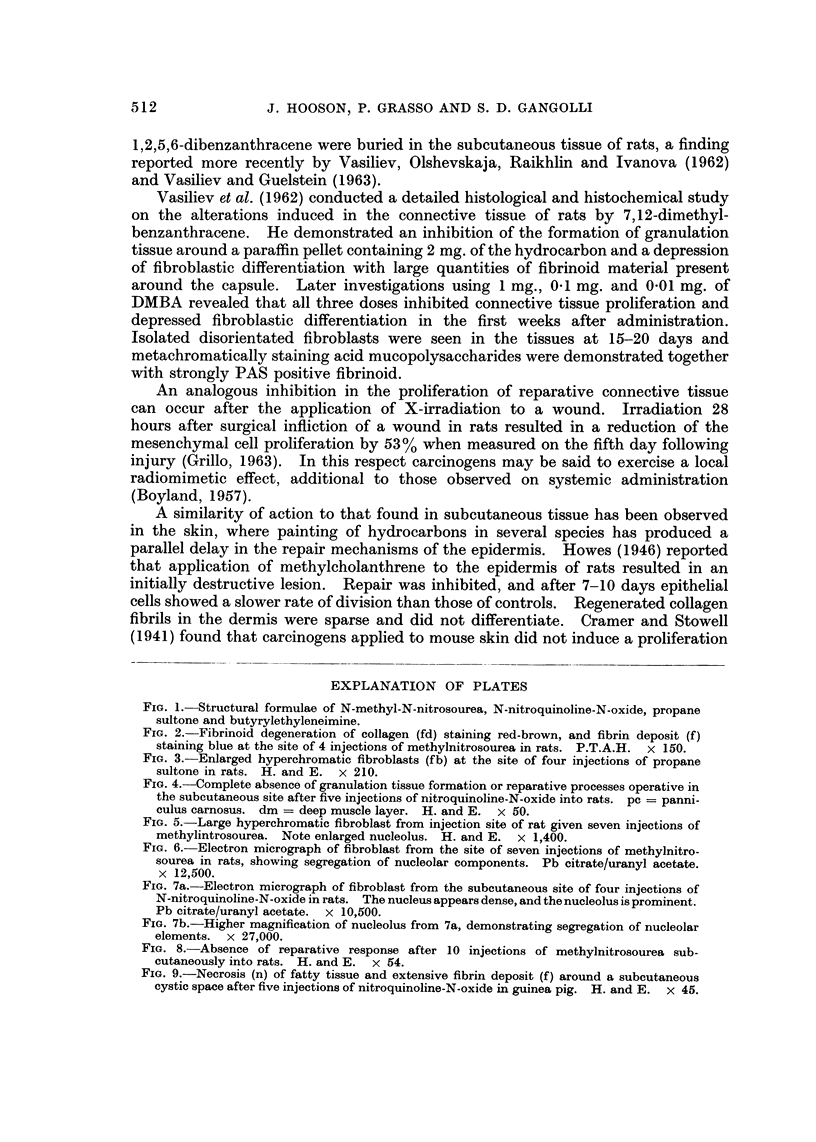
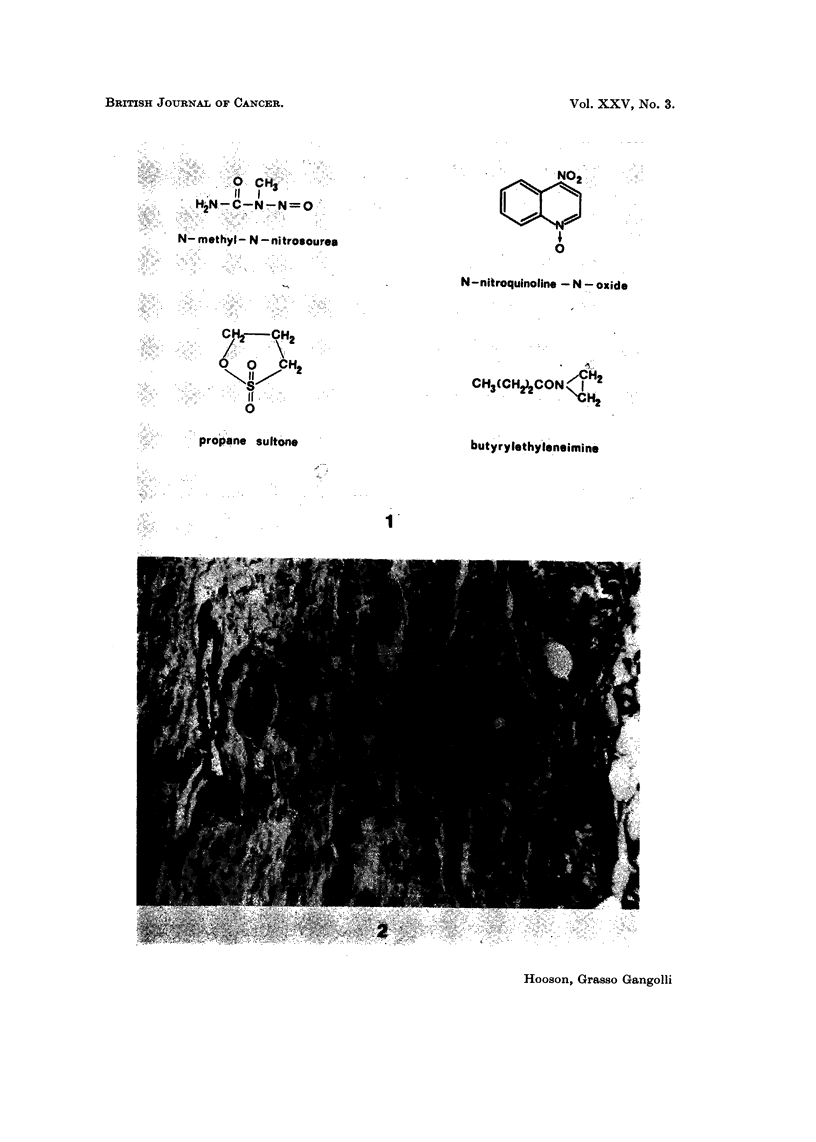
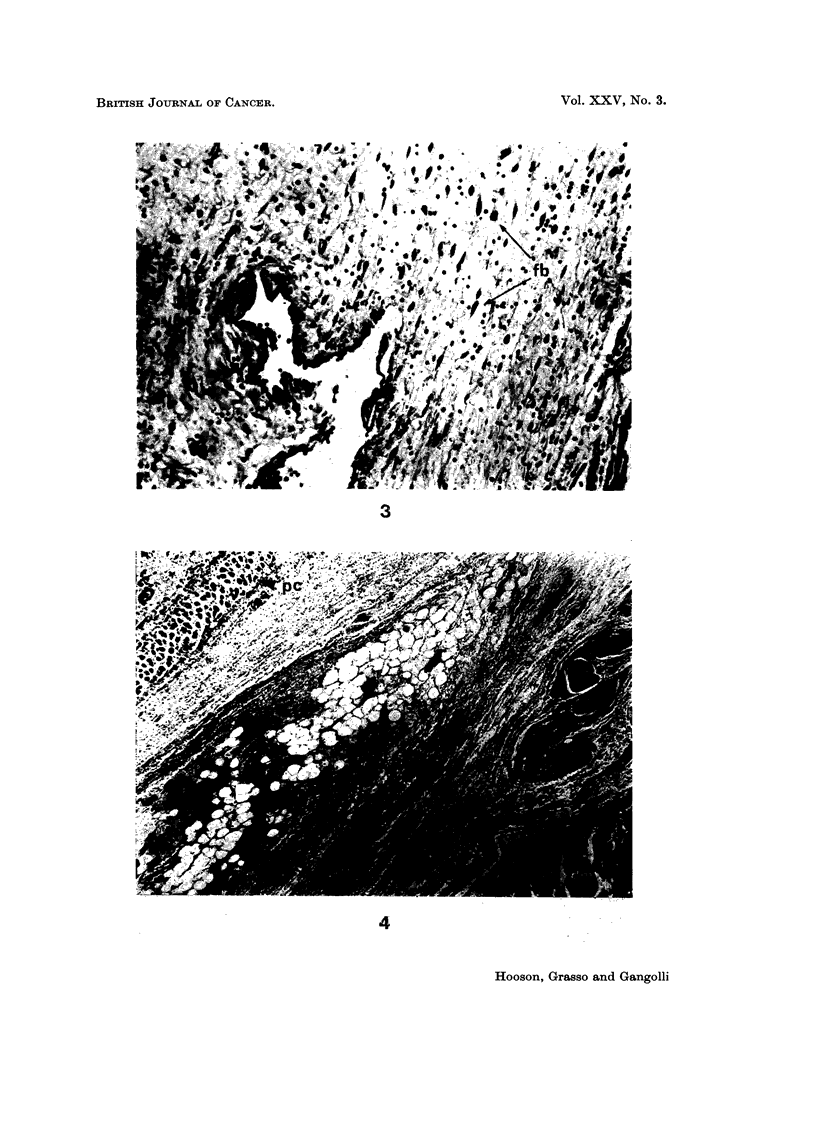
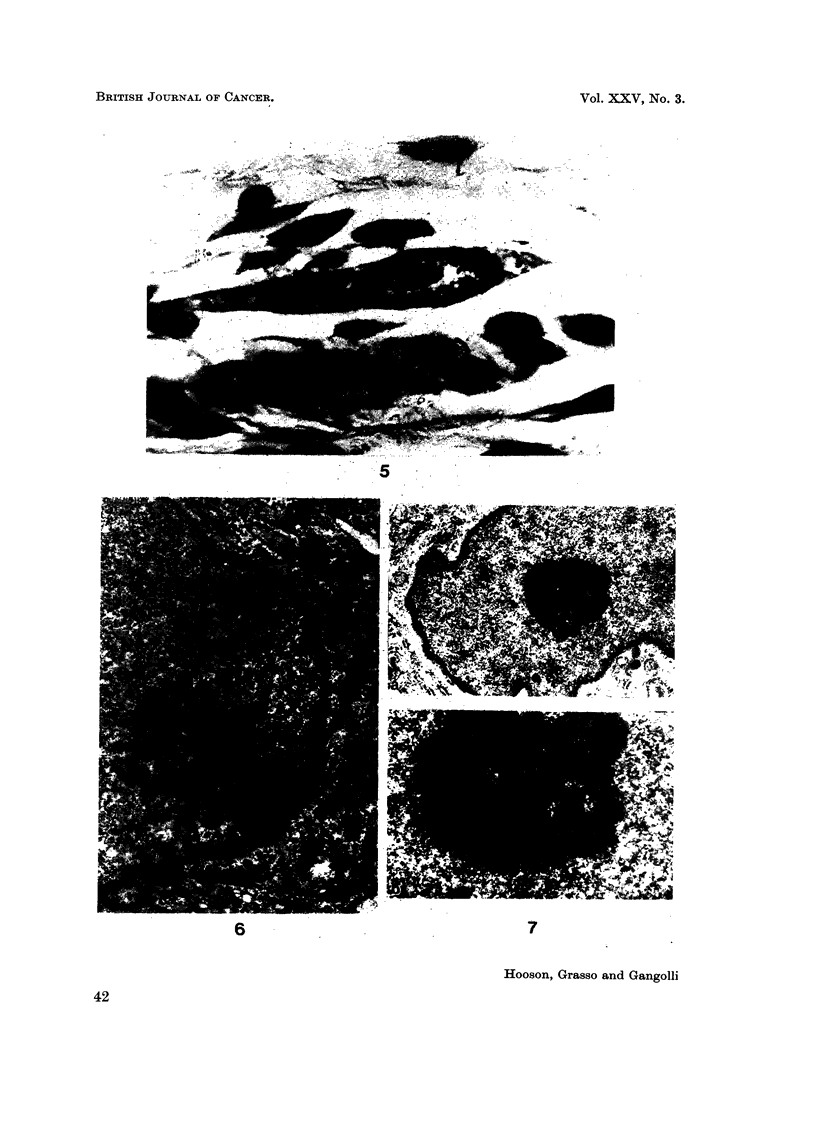
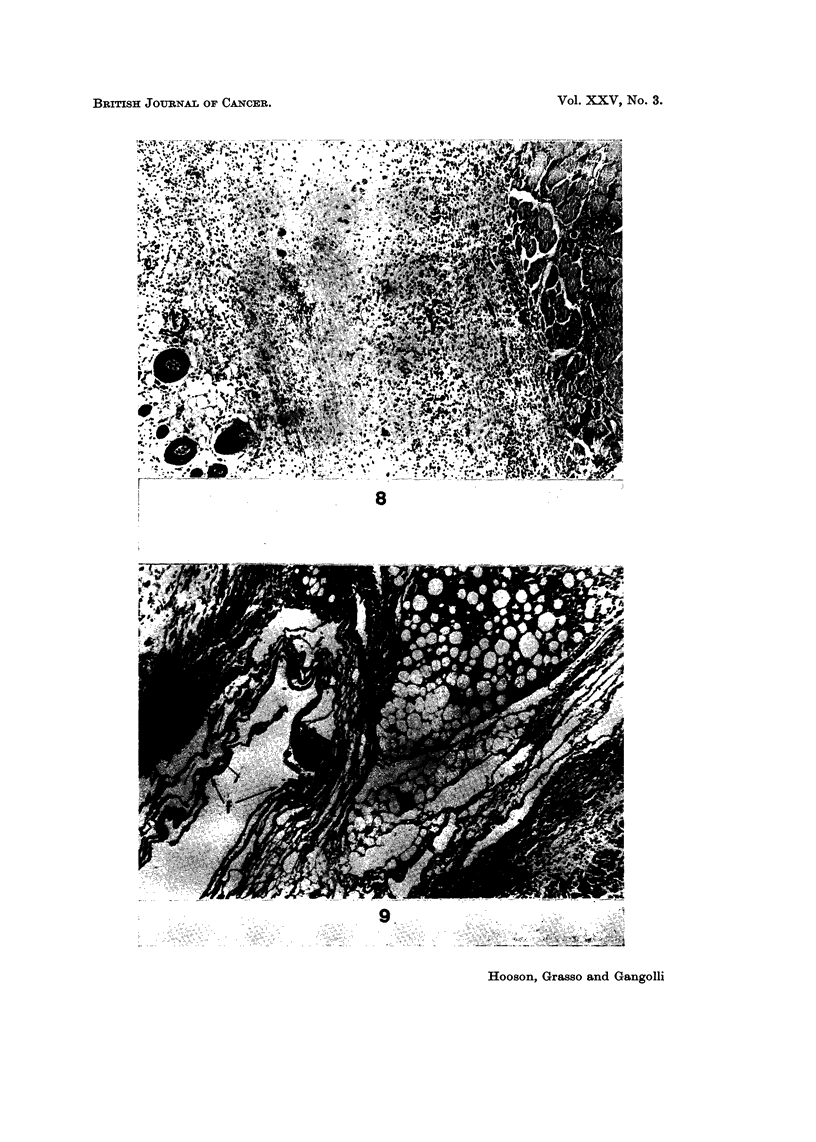

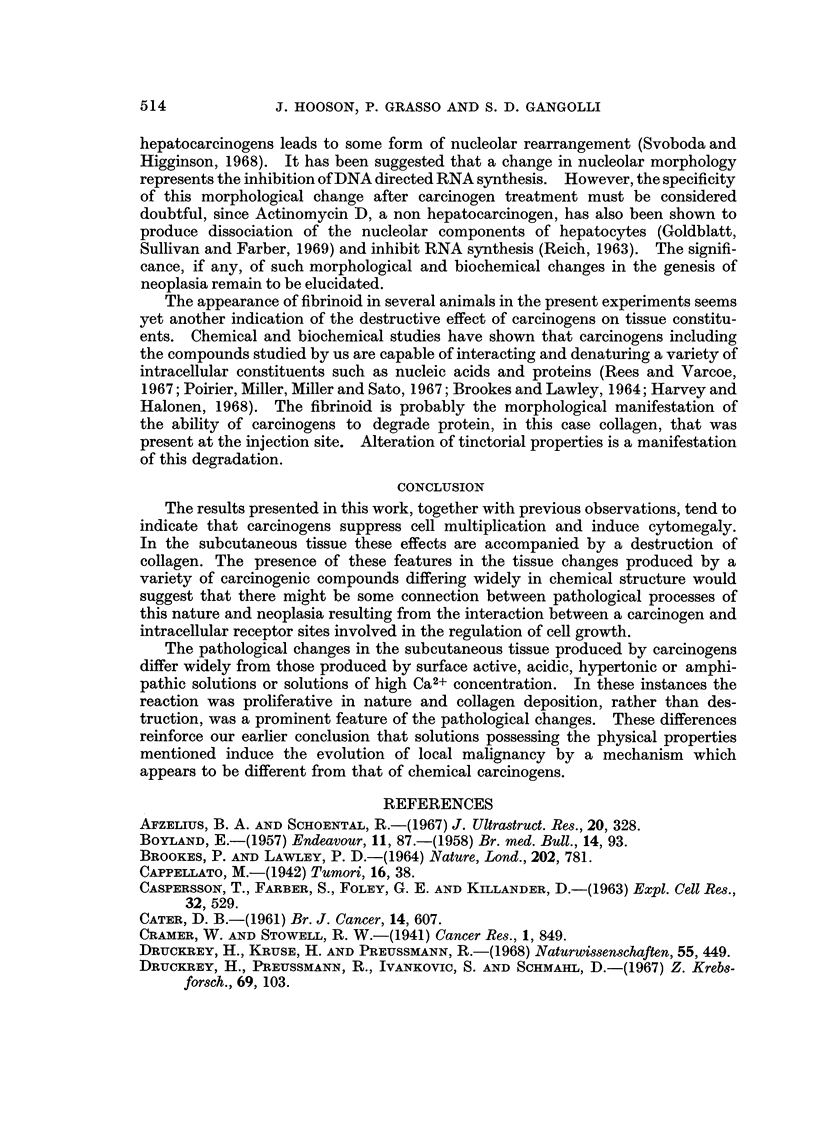
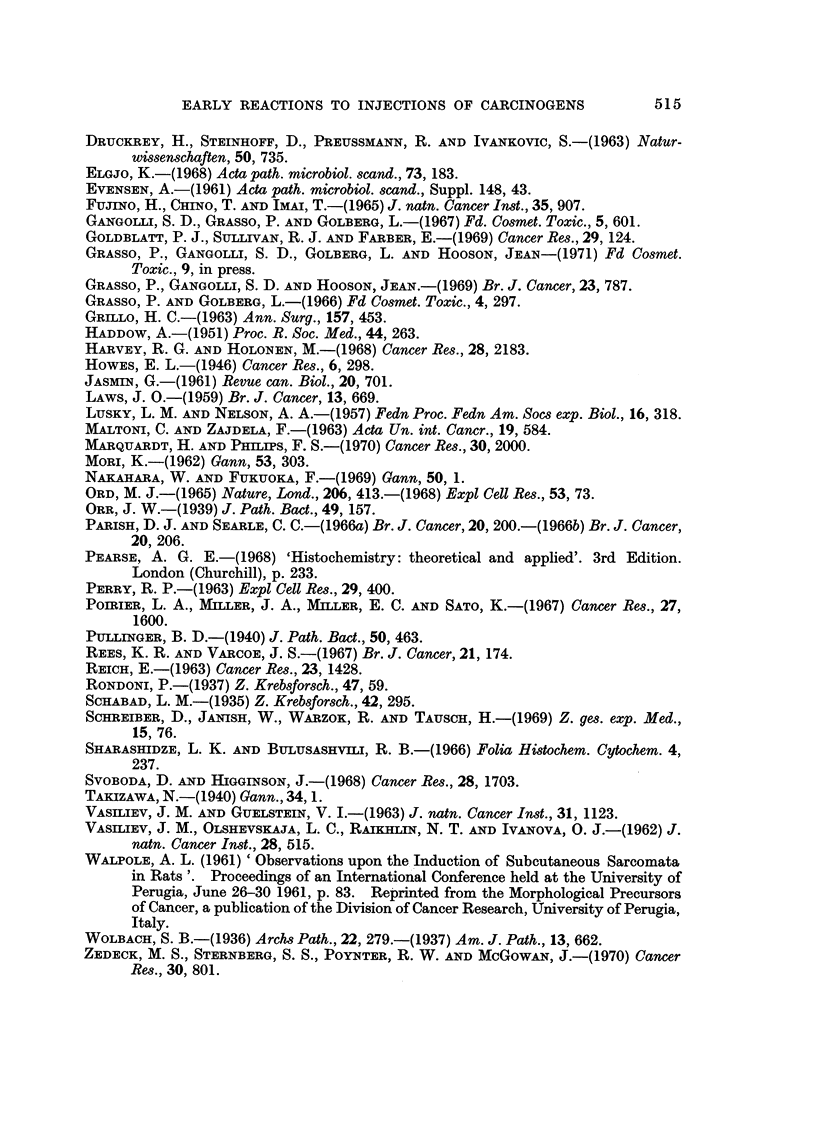
Images in this article
Selected References
These references are in PubMed. This may not be the complete list of references from this article.
- Afzelius B. A., Schoental R. The ultrastructure of the enlarged hepatocytes induced in rats with a single oral dose of retrorsine, a pyrrolizidine (Senecio) alkaloid. J Ultrastruct Res. 1967 Oct 31;20(5):328–345. doi: 10.1016/s0022-5320(67)80103-5. [DOI] [PubMed] [Google Scholar]
- BROOKES P., LAWLEY P. D. EVIDENCE FOR THE BINDING OF POLYNUCLEAR AROMATIC HYDROCARBONS TO THE NUCLEIC ACIDS OF MOUSE SKIN: RELATION BETWEEN CARCINOGENIC POWER OF HYDROCARBONS AND THEIR BINDING TO DEOXYRIBONUCLEIC ACID. Nature. 1964 May 23;202:781–784. doi: 10.1038/202781a0. [DOI] [PubMed] [Google Scholar]
- CASPERSSON T., FARBER S., FOLEY G. E., KILLANDER D. CYTOCHEMICAL OBSERVATIONS ON THE NUCLEOLUS-RIBOSOME SYSTEM. EFFECTS OF ACTINOMYCIN D AND NITROGEN MUSTARD. Exp Cell Res. 1963 Dec;32:529–552. doi: 10.1016/0014-4827(63)90192-7. [DOI] [PubMed] [Google Scholar]
- Druckrey H., Preussmann R., Ivankovic S., Schmähl D. Organotrope carcinogene Wirkungen bei 65 verschiedenen N-Nitroso-Verbindungen an BD-Ratten. Z Krebsforsch. 1967;69(2):103–201. [PubMed] [Google Scholar]
- Elgjo K. Growth kinetics of the mouse epidermis after a single application of 3,4-benzopyrene, croton oil, or 1,2-benzopyrene. Acta Pathol Microbiol Scand. 1968;73(2):183–190. doi: 10.1111/j.1699-0463.1968.tb00491.x. [DOI] [PubMed] [Google Scholar]
- Gangolli S. D., Grasso P., Golberg L. Physical factors determining the early local tissue reactions produced by food colourings and other compounds injected subcutaneously. Food Cosmet Toxicol. 1967 Nov;5(5):601–621. doi: 10.1016/s0015-6264(67)83213-9. [DOI] [PubMed] [Google Scholar]
- Goldblatt P. J., Sullivan R. J., Farber E. Morphologic and metabolic alterations in hepatic cell nucleoli induced by varying doses of actinomycin D. Cancer Res. 1969 Jan;29(1):124–135. [PubMed] [Google Scholar]
- Grasso P., Golberg L. Subcutaneous sarcoma as an index of carcinogenic potency. Food Cosmet Toxicol. 1966 Jun;4(3):297–320. doi: 10.1016/s0015-6264(66)80539-4. [DOI] [PubMed] [Google Scholar]
- HADDOW A. Advances in the study of chemical carcinogenesis. Proc R Soc Med. 1951 Apr;44(4):263–266. [PMC free article] [PubMed] [Google Scholar]
- LAWS J. O. Tissue regeneration and tumour development. Br J Cancer. 1959 Dec;13:669–674. doi: 10.1038/bjc.1959.74. [DOI] [PMC free article] [PubMed] [Google Scholar]
- MALTONI C., ZAJDELA F. CHANGES OF THE SUB-EPITHELIAL CONNECTIVE TISSUES IN THE EARLY STAGES OF SKIN CARCINOGENESIS INDUCED BY CHEMICAL AGENTS. Acta Unio Int Contra Cancrum. 1963;19:584–588. [PubMed] [Google Scholar]
- Ord M. J. Effect of N-methyl N-nitroso urethane on amoebae. Nature. 1965 Apr 24;206(982):413–414. doi: 10.1038/206413b0. [DOI] [PubMed] [Google Scholar]
- Parish D. J., Searle C. E. The carcinogenicity of beta-propiolactone and 4-nitroquinoline N-oxide for the skin of the guinea-pig. Br J Cancer. 1966 Mar;20(1):200–205. doi: 10.1038/bjc.1966.23. [DOI] [PMC free article] [PubMed] [Google Scholar]
- REICH E. BIOCHEMISTRY OF ACTINOMYCINS. Cancer Res. 1963 Sep;23:1428–1441. [PubMed] [Google Scholar]
- Svoboda D., Higginson J. A comparison of ultrastructural changes in rat liver due to chemical carcinogens. Cancer Res. 1968 Sep;28(9):1703–1733. [PubMed] [Google Scholar]
- VASILIEV J. M., OLSHEVSKAJA L. V., RAIKHLIN N. T., IVANOVA O. J. Comparative study of alterations induced by 7,12-dimethylbenz[a]anthracene and polymer films in the subcutaneous connective tissue of rats. J Natl Cancer Inst. 1962 Mar;28:515–559. [PubMed] [Google Scholar]
- Zedeck M. S., Sternberg S. S., Poynter R. W., McGowan J. Biochemical and pathological effects of methylazoxymethanol acetate, a potent carcinogen. Cancer Res. 1970 Mar;30(3):801–812. [PubMed] [Google Scholar]



